Rising inflation rates and a cost of living crisis are scaring investors off food and drink challengers
Food and drink has provided rich pickings for plucky challengers wanting to disrupt staid, risk-averse behemoths. Fragmenting consumer tastes, the infinite shelf space of online, and the lower cost of digital marketing have all played their part, but the ultimate underpinning has been ready access to accessible funding thanks to over a decade of historically low interest rates.
But the rapid rise of inflation – which has pushed interest rates from 0.1% in 2021 to 4.5% currently – has changed the picture. “[This is] one of if not the most challenging period to raise money for challenger brands, particularly from institutional investors,” says Giles Brook, serial fmcg investor and former boss of Vita Coco.
According to crowdfunding specialist Seedrs, venture capital funding of startups has plunged by more than 50% so far in 2023, as investors pull back from committing cash to riskier growth assets. And that’s off the back of 2022 when M&A deals for British food and drink companies fell by 30%, according to Grant Thornton.
For Andy Shovel, co-founder of alt-meat brand This, the tightening is primarily a function of the cost of borrowing. “If investors can borrow very cheaply they are more likely to see higher-risk, higher-growth early-stage companies as risks worth taking,” he says.
But it goes further than that. Food and drink growth players also appear to be suffering from a reputation issue with grocery itself, with a lot of VC funds now scared of the consumer space, according to Kirsty Macdonald, principal at JamJar Investments. “With disposable income going down and down, funds are saying ‘we’re just not going near consumer’.”
Thomas Swiers, national head of food & drink at restructuring specialist Interpath Advisory, agrees. “There is a view of ‘anything but food and drink’ at the moment for some investors.” Although he notes that more experienced and prominent food and drink investors retain appetite in the sector.
This scaling back has disproportionately hit growth SMEs, given they already fall in an awkward funding space, even before the recent spikes in the cost of borrowing. “Unlike in tech, biotech, healthcare and energy, if you try and find institutional money willing to write a cheque up to £5m, there are very limited focused funds in the food and drink space in the UK,” says Chris Stott, KPMG’s UK food and drink lead.
“UK food and drink, and the wider consumer industry, is not set up brilliantly to support businesses from that £2m to £10m turnover journey,” he concludes.
Not everyone is struggling…
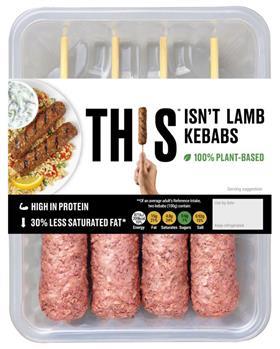
This
Date: 2022-2023
Amount raised: £15m
From who: £4.7m on Seedrs crowdfunding platform plus £10m from institutional investors
Valuation: £150m
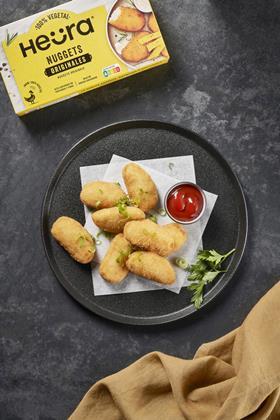
Heura
Date: May 2023
Amount raised: €3.4m
From who: Crowdcube investors, plus €1.5m from Newtree Impact
Valuation: Convertible (valued at €70m in 2021)
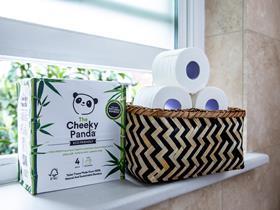
Cheeky Panda
Date: Jan 2023
Amount raised: £978,000
From who: Seedrs crowdfunding platform
Valuation: £85.5m

Lucky Saint
Date: Jan 2023
Amount raised: £10m Series A round
From who: Led by Beringea and VC JamJar Investments
Valuation: Not disclosed

Love Cocoa
Date: Jan 2023
Amount raised: £4.3m
From who: Entrepreneur Richard Koch
Valuation: Not disclosed
This has had an inevitable impact on SME valuations, which have slumped dramatically since peaking during and immediately after the Covid period. It doesn’t help the sector that some of those biggest falls in value are in categories that were previously amongst the most successful at raising growth capital, such as plant-based and direct to consumer.
The deflation of these bubbles has mounted over the past year as investors become increasingly concerned over lack of growth and overhyped expectations, whether that’s at globally listed players like Beyond Meat, Oatly and Just Eat, or on-trend challenger brands like Allplants and Gousto.
“As in all areas of investing, food and beverage has fads, especially in new categories such as meat alternatives,” says JamJar’s Macdonald. “There is still a market there but no category defies gravity forever.”
The typical profile of food and drink growth players has been that of a loss-making growth company concentrating on growing the top line and moving to profitability once scale has been achieved. But depressed valuations and investor caution point to a defensive shift in investor priorities, with fewer now willing to stump up for loss-fuelled growth.
“Everyone, including myself, is sick of seeing businesses in excess of three to five years old still haemorrhaging cash, effectively buying growth,” says Brook. “The industry now expects to see break-even, or dare I say positive EBITDA, a lot earlier in the evolution story.”
This renewed focus on the bottom line is proving problematic for young businesses. Even those who haven’t looked to use significant losses to fund market share gains will typically operate at far tighter margins than their larger competitors. This is largely because few control their own manufacturing and need to work with co-packers.
“There is a view of ‘anything but food and drink’ at the moment”
Thomas Swiers, national head of food & drink at Interpath Advisory
It means the upcoming generation of startups will likely need new and more cautious operating models if they are to survive into adulthood. “I probably wouldn’t launch This now, but if we did, we’d have no choice but to follow a different path as no investors will take such risks in this climate,” Shovel admits. “It would be a different journey, and a much longer journey of slower growth.”
Similarly at JamJar, which has a stake in the likes of Oatly, Lucky Saint and Graze, Macdonald says the advice is “to think of your last round of funding as the last you’ll ever raise before becoming profitable. Then you can raise from a position of strength and afford to be pickier about your investors.”
The road to profitability
The obvious roadblock on the way to profitability is the other intense macroeconomic pressure on the sector: soaring input costs.
While accusations of ‘greedflation’ abound, the reality is that the vast majority of food and drink SMEs have found cost recovery a struggle, and this in turn has exacerbated already slimming margins. “It’s been incredibly difficult for a number of challengers brands to push through more than justifiable cost inflation with retailers [that] the blue chip and corporate entities have been successful in achieving,” notes Brook. “This has adversely impacted gross margins, working capital and burn rates in some circumstances. I feel really sorry for some outstanding emerging business that have struggled here.”
The pressure on margin and cashflow has led to an inevitable uptick in food and drink sector insolvencies, as struggling firms suffer from a drop in appetite to bail them out. Failures at manufacturers jumped more than 250% in the year ended 31 January 2023 as 143 businesses collapsed, compared with just 39 in the prior 12 months, according to data from financial services firm Mazars.
With even mature businesses having suffered the same fate recently, such as historic pork pie maker Vale of Mowbray or established private equity-backed juice business Orchard House, challenger brands have inevitably hit the buffers too, like babyfood DTC player Mamamade or plant-based Meatless Farm.
“Every business going through a period of financial distress will, in the final throes, be looking for additional investment,” says Swiers. “Most businesses that enter administration fail because of a lack of access to funding.”
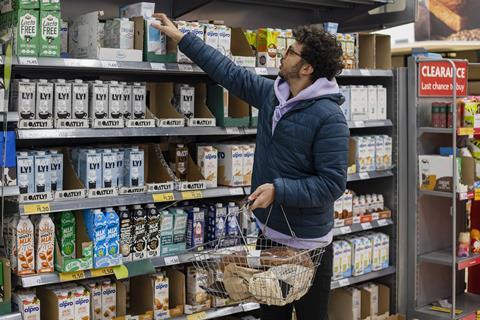
The ongoing battle to raise early-stage funding even before the tightening of institutional funds helped drive the rapid take-up of crowdfunding towards the end of the last decade – and it’s a trend that has proved durable despite the economic headwinds. Indeed, there is some evidence food and drink growth firms are making more use of crowdfunding to mitigate tougher conditions in the VC sector. Seedrs data showed a 24% uptick in successful food and drink campaigns in 2022 up to 97, with businesses raising £105.1m in total, a year-on-year increase of 14%.
That has continued in 2023, according to Scott Simpkin, the platform’s UK campaigns team lead, who said campaigns are up 43% so far in 2023 with almost double the amount raised (£65.4m compared to £35.5m). “One of the many propositions of our platform is that it provides a solution to businesses that are experiencing broader fundraising challenges. That is perhaps why we have seen an increase in fmcg businesses raising on Seedrs during this difficult period.”
Rubies in the Rubble co-founder Jenny Costa said crowdfunding was losing its stigma as a vehicle primarily for those who couldn’t raise VC cash, after it successfully raised £565k in May. “Not only is it a way to raise funding, but also to raise awareness and build an impassioned community of investors who want to talk about your company to their own networks,” she says.
This, which has raised eight-figure sums from VC, raised £8m from the crowd in mid-2022, with Shovel hailing the advantages of “building a community with your customers in a more sustainable way than just having them follow you on social media”.
“The markets have deteriorated since we closed our round in September, but there are still effective campaigns being run and so it might be that retail investors who are writing average ticket sizes of £300-£500 are not as sensitive to what’s going on in the macro-environment,” he suggests.
There seems little evidence appetite from crowd investors has been hit by the number of failed companies that have raised crowd cash, with other examples including wellness drinks maker Pure Earth and brewer Wild Beer Co.
“There are going to be fewer new entrants because the funding has contracted”
Kirsty Macdonald, principal at JamJar Investments
Nevertheless, access to crowd cash is not always straightforward. High-profile failures Planet Organic and Farmison were both forced to pull significant crowdfunding campaigns when they could no longer meet the growth plans outlined in their prospectuses.
Marc Coloma, co-founder of Heura, which raised €3.4m last month, said it had modified its approach from previous raising because of the economic landscape, by “focusing even more on enhancing transparency and strengthening communications” to give investors maximum insight into the business.
However, Nurture Brands MD Adam Draper doubts crowdfunding can fill the gap that has emerged. “You tend to see the same businesses raising on crowdfunding sites and, with few exceptions, the amounts they’re raising aren’t hugely significant,” he says. “It is usually just topping up and that money will go quickly. So there may be a shake-out in the next six to nine months as fundraising continues to get harder.”
The tightening of available capital has raised concerns about prospects for the next wave of food and drink growth, potentially harming the previously thriving eco-system of creative new brands.

“It is going to be different,” says Macdonald. “There are going to be fewer new entrants because the funding has contracted, but the ones that survive will be stronger. They’ll be more commercial beasts.”
“Personally, I’m not worried, “ agrees Brook. “We’re already seeing liquidity restraints starting to ease up. These things are always cyclical, and whoever rides the cycles best will prevail.”
He suggests the corner has already been turned on the investment climate into the second half of the year and into 2024. “I’m confident those exhilarating, on-trend, challenger brands that should become the household names of tomorrow will secure the funds to help realise their amazing ambitions.”
In this sense, the current environment will hasten the shake-out between winners and losers and exacerbate that gap. Those who fail to heed market sentiment towards adequate gross margins, or fail to maintain a solid balance sheet, are likely to suffer, but those that have a clear plan to profitable growth will find money is still around that needs to be put to work.
“The question is, do you stand for something different and have you properly articulated it?” asks KPMG’s Stott. “Without a clear USP, many will struggle to drive repeat purchase and margin and therefore much-needed funding.”
“It comes down to execution and promises being delivered,” says Shovel. “Those who have made a host of promises and failed to deliver – even in the good times they will always eventually get shown up.”
There is no doubt tightening access to funds has made life tougher for challenger brands. But that is the nature of being a challenger brand, trying to gatecrash established businesses with deep pockets. Despite the struggles, there is demand for innovative new ideas, and will always be backing for the best of them.








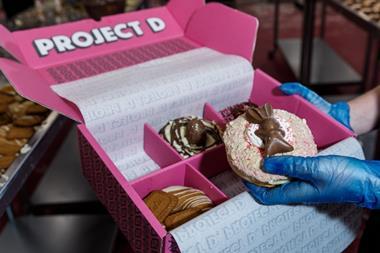




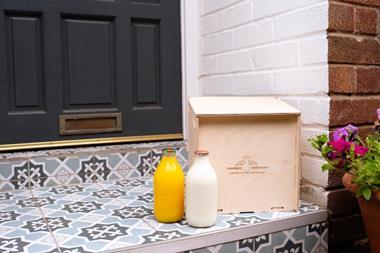






No comments yet